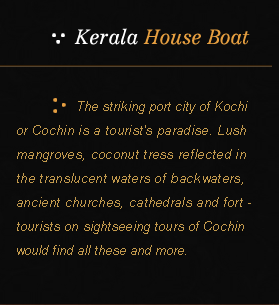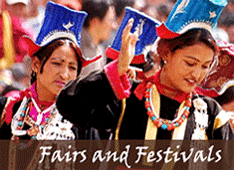
Location : Chennai - Kanchipuram - Mahabalipuram - Tiruvannamalai - Pondicherry - Kumbakonam - Tanjore - Trichy - Madurai - Periyar - Kumarakom - Alleppey - Cochin.
Chennai Arrival:
COMPANY REPRESENTATIVE will receive you on arrival at the airport and transfer to the hotel.
Chennai was established only in the 17th century by the British, some parts of the city like Triplicane and its outskirts are almost 2000 years old. The British on settling developed it into a major urban centre and naval base. By the 20th century, it had become an important administrative centre, as the capital of the Madras Presidency.
The city's former name, Madras, is derived from Madraspatinam, a fishing village north of Fort St. George. There is little agreement among researchers about the exact origin of the name Madraspatinam. Some believe that the Portuguese, who arrived in the area in the 16th century, may have named the village Madre de Deus. Others believe that the village's name came from the once prominent Medeiros family (variously known as Madera or Madra in succeeding years) of Portuguese origin, which had consecrated the Madre de Deus Church in the Chennai locality, Santhome, in 1575. It is uncertain whether the name 'Madraspatinam' was in use before European influence.
Sometime after the British gained possession of the area in the 17th century, the two towns, Madraspatinam and Chennapattinam, were merged. The British referred to the united town as Madraspatinam. The state government officially changed it to Chennai in 1996, at a time when many Indian cities were being renamed.
Chennai is an important center for Carnatic Music and hosts a large cultural event, the annual Madras Music Season, which includes performances by hundreds of artists. The city has a vibrant theatre scene and is an important centre for the Bharatnatayam, a classical dance form. The Tamil film industry, one of the largest film industries in India, is based in the city; the soundtracks of the films dominate its music scene.
Overnight will be at Chennai.
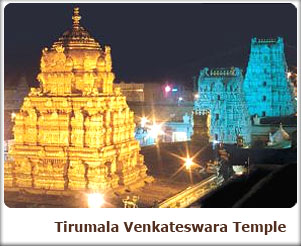 Day 02
Day 02
Chennai – Excursion to Tirupati:
Breakfast will be at the hotel.
Proceed for an excursion to Tirupati.
Tirumala Venkateswara Temple is a famous Hindu temple of Lord Vishnu in the form of Lord Venkateshwara located in the hill town Tirumala, near Tirupati in the Chittor district of Andhra Pradesh, India. The temple is situated on Venkatadri, one of the seven hills of Tirumala, and hence is also known as the Temple of Seven Hills (Saptagiri in Sanskrit). The presiding deity of the temple, Lord Venkateswara, is also known by other names - Balaji, Govinda and Srinivasa. The temple is reportedly the richest and the most visited place of worship in the world. The temple is visited by about 100,000 to 200,000 pilgrims daily, while on special occasions and festivals, like the annual Brahmotsavam, the number of pilgrims shoots up to 500,000, making it the most visited holy place in the world.
According to legend, the temple has a self-manifested murti (idol) of Lord Venkateswara, believed to have resided there for the entire Kali Yuga. In Sri Vaishnava tradition, the temple is considered one of the 108 Divya Desams.
Enjoy Bharatnatayam Dance Presentation in evening.
Overnight will be at Chennai.
Day 03
Chennai – Kanchipuram - Mahabalipuram:
By Road 75Kms/02 hrs
After breakfast proceed for the sightseeing.
Fort ST. George: was built in 1640 AD, by the British East India Company under the direct supervision of Francis Day and Andrew Cogon. This place achieved its name from Saint George, the patron saint of England. The fort houses Saint Mary's Church and fort museum. Saint Mary's Church the oldest Anglican Church built in 1680 and the tombstones in its courtyard are the oldest British tombstones in India.
San Thome Basilica: at the south end of Marina Beach was named after Saint Thomas "doubting apostle of Jesus Christ". It is believed he has come to Madras in 52 AD and kill at St. Thomas Mount just outside the city in 78 AD. Built in 16th Century by the Portuguese, in 1896 it was made a basilica. The beautiful stained glass window at the basilica portrays the story of St Thomas and the central hall has 14 wooden plaques depicting scenes from the last days of Christ.. In the cathedral is a 3ft. high statue of Virgin Mary which is believed to have been brought from Portugal in 1543
Theosophical Society: formed to facilitate and encourage the study of comparative religion, philosophy and science is situated in beautiful sylvan settings in Adyar. The society was founded by Madame Blavatsky and Col. Olott in USA, and later moved to Adyar in 1882. Apart from shrines of all faiths and the peaceful Garden of Remembrance, there is a 95-year old library which has a very good collection of rare Oriental manuscripts written on palm leaves and parchment
Rippon Building: Another pride of Chennai city, this 100 year old building was named after Governor Lord Rippon, the father of self-government in India. The Chennai Corporation and its council are functioning in this building. (Entry time – 10 am to 03 pm)
Kapaleeswarar Temple: Dedicated to Lord Shiva, Kapaleeswarar temple has inscriptions from the 13th century A.D. The temple 'Gopuram' (tower) is in the characteristic Dravidian style of architecture. The walls and pillars of temple have very delicate and intricate carvings which depict the scenes from Hindu mythology.
Drive to Mahabalipuram visiting Kanchipuram enroute.
Kanchipuram: Kanchipuram is a small rural town about 75 km from Chennai (Madras) in the state of Tamilnadu. It also serves as the district head quarters for the Chengalpattu district. Its economy is entirely dependent on tourism and the well established handloom industry. Silk sarees manufactured here are one of the best in the entire world. Is one of the India’s seven sacred cities it was the historical Capital of the Pal lavas. This city is also a world renowned for the gorgeous hand woven silk. Saris of myriad rich colors, noted for their shine, finish and matchless beauty. The Exquisite silk saris are woven from the pure mulberry silk in contrasting colors and have an enviable reputation for luster, durability and finish.
Continue drive to Mahabalipuram. Reach Mahabalipuram and check into the hotel.
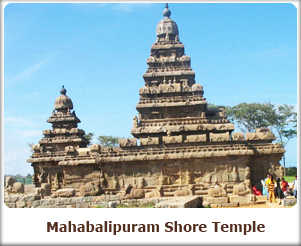 Mahabalipuram or Mamallapuram was an ancient port city on the Coromandel Coast faces the Bay of Bengal, built by the Pallava Dynasty in the 7th century. It was named after the cruel demon king Mahabali, who was slayed by Goddess Durga, and is an important World Heritage Site today. It is 60kms from Chennai, and can be reached by the scenic East Coast Road.
Mahabalipuram or Mamallapuram was an ancient port city on the Coromandel Coast faces the Bay of Bengal, built by the Pallava Dynasty in the 7th century. It was named after the cruel demon king Mahabali, who was slayed by Goddess Durga, and is an important World Heritage Site today. It is 60kms from Chennai, and can be reached by the scenic East Coast Road.
It was during the reign of King Narasimha Varman I, the name Mahabalipuram was changed. It was renamed Mahabalipuram which is called till now. There is a story behind. The name Mamallapuram king Narasimha Varman I was a great and valiant warrior. He was given the title Mamalla which means ‘the great wrestler’ so the name was converted from Mahabalipuram to Mahabalipuram considering the great king and his achievements.
The richness in Mahabalipuram was not known to many, as these Pallavas did not outlet and expose their quality and innovative creations to the outer world for obvious reasons. The aestheticism in Mahabalipuram was hidden until the late 185h century. What is special about Mahabalipuram? Of course every one can point out the rock - cut caves, temples made from a single rock, temples and strives of different structures, and bas-reliefs which are so artistic and sheer creativity. Mamallapuram is referred as an ‘open-air museum’. The great Pallava kings Narasimha I and Rajasimha have well preserved these stylistic qualities that one enjoys in Mahabalipuram even in the present day.
The beauty of the place is not only due to these architecture but the vast casuarinas trees, the silvery sandy beach the classical hand male crafts around have made them all to form what is a collective splendor. Any visitor who visits Mahabalipuram will remain startled and intoxicated with the grandeur. They feel hand hearted and more out from this historical and fascinating tourist spot.
Mahabalipuram is known for the beautiful historical monuments that were built mostly during the Pallava Dynasty in the form of rock cut caves and temples. It’s beautiful and unspoilt beaches stretching for miles, and lined by groves of casuarinas is another great attraction.
Buy stone carvings made by the local artists; chill on the sandy beaches; drink beer and try the local cuisines.
Overnight will be at Mahabalipuram.
Day 04
Mahabalipuram:
Breakfast will be at the hotel.
Enjoy visit to the following places:
Caves: The Varaha Cave shows two incarnations of Vishnu-Varaha (boar) and Vamana (dwarf) along with four panels of the famous Pallava doorkeepers in contemplative reverie. It is the lyrical softness and grace of these supposed to be macho-guards that make them attract the attention of the tourists. The 7th century Mahisasurmardini Cave has fine bas-reliefs on its panels while the Dharmaraja Cave sports three empty shrines. The other highlights of these caves are the Somaskanda, masterpiece of 'dhwani' (the art of suggestion) depicting Lord Vishnu and a huge theatrical panel showing Goddess Durga's fight with the demon Mahishasura. Just 5 km from the city is another 7th century cave called Tiger Cave, a rock-cut shrine.
Arjuna's Penance: Arjuna's Penance is 27 metres long and 9 metres high bas-relief believed to be the world's largest bas-relief. It consists of two huge boulders with a cleft in the rock that depicts the descent of the Ganga on Earth to fulfill the wish of King Bhagiratha to redeem the cursed souls of his ancestors. The carvings depict two large elephants, scenes from the tales of Panchatantra, a forest with tribal people, all forms of animal life and graceful women beaming with inner beauty. The whole scene seems to have a subtle touch edge of humor that is evident in the cat doing rigorous penance against an ascetic.
Rathas: The famous Rathas or Chariots are situated at the southern extreme of Mahabalipuram. Known as the Paanch Pandava Rathas, after the five characters of Mahabharata, four of them are carved out of a single rock. The Draupadi and Arjuna Rathas are square in shape while the Bhima Ratha is linear in shape. Dharamraja Ratha is tallest of all and Nakula-Sahadeva Ratha is apsidal.
Krishna Mandapam: One of the earliest rock-cut temples of Mahabalipuram, its walls depicts scenes of Krishna's pastoral life. One of them depicts Krishna lifting the Govardhan Parvat on his little finger to protect his people from wrath of the Rain God, Indra.
Shore Temple: The best of all at Mahabalipuram is its Shore Temple. It houses one Vishnu temple and two Shiva temples that are all architectural masterpieces in themselves. The sea waves lashing all around make for pretty scenery for the temples.
You could also visit the Sculpture Museum, home to many beautiful sculptures, and the old and new lighthouses which give you a panoramic view of sea.
Overnight will be at Mahabalipuram. Day 05
Day 05 Mahabalipuram – Tiruvannamalai – Pondicherry:
By Road 112Kms/03hrs
After breakfast drive to Tiruvannamalai a pilgrim centre with an ancient temple of Lord Shiva.
After lunch at local restaurant, proceed to Pondicherry. Reach and check into the hotel.
Pondicherry is a Union Territory of India. It is a former French colony, consisting of four non-contiguous enclaves, or regions, and named after the largest region, Puducherry. The territory was known as Pondicherry until 2006 when it was given the name for which the region was known prior to foreign rule. There are four districts which comprise this territory namely Pondicherry, Karaikal, Yanam and Mahe. Pondicherry is referred by names such as ‘Quintessence of French Culture’, ‘India’s Little France’ and ‘The French Riviera of the East’. This territory was under the French rule for nearly 281 years. Still it has the French flavor in it as one can see by the grand colonial mansions, beautiful boulevards, and placid promenades, spellings on sign boards and buildings, names of roads and public places.
The Union Territory of Pudhucherry (earlier Pondicherry) comprises of the four unconnected, erstwhile French settlements of Pudhucherry, Karaikal, Mahe and Yanam. While Karaikal lies 150 km south of Pudhucherry on the east coast, Mahe is on the Malabar Coast and Yanam in the East Godavari district of Andhra Pradesh.
Tourist attractions in Pondicherry lie in its ambience. Old French style buildings, churches and museums, tree-lined boulevards along the seashore would remind you of a bygone era. The Laidback Township, pristine beach and the palm trees swaying in breeze bring a slice of serenity. The only sound you can hear is the waves crashing against the rocks and the chirping of the birds.
But to cap it all, the Auroville Ashram is the biggest of all tourist attractions in Pondicherry. Just because of it, the destination of Pondicherry exudes a spiritual aura. For the weary soul, this is an ideal retreat. Any evening head for the Ashram meditate, soothe the battered psyche.
Drive to visit Aurobindo’s Ashram which is also known as “the city of dawn”. The place is 10 km north of Pondicherry. This ashram promotes Shri Aurobindo’s ideas in bringing about a synthesis of Yoga and modern science, so as to unite the spirit and matter.
Enjoy heritage walks, cover French and Tamil sectors.
Overnight will be at Pondicherry.Day 06
Pondicherry – Kumbakonam - Tanjore:
By Road 160Kms/04hrs
Breakfast will be at the hotel.
You can also choose to visit a few other monuments that are located in the city. The French War Memorial, the Aayi Mandapam, a 19th Century Lighthouse, Romain Rolland Library, the Museum are other tourist attractions in Pondicherry. The old Parisian churches would draw you attention due to their architectural beauty.
Later drive to Thanjavur enroute visiting the Brass factory at Kumbakonam.
Reach Tanjore and check into the hotel.
Thanjavur has been the capital of mighty Cholas for centuries. Therefore it is only natural that the city has remained the focal point of cultural movement and activities in the peninsular India. The Cholas have been known as the patrons of magnificent art culture and that is why Tanjore has a lot of attractions to see and appreciate. Draped in centuries of cultural and religious tradition, Thanjavur exudes the quiet wisdom of the past. Located on the East coast of Tamil Nadu, 200 miles South of Chennai,the river Cauvery washes its banks.The river and a network of irrigation canals nurture this coastal district and its abundant paddy fields, coconut groves, and mango and plantain orchards, making it the 'Rice Bowl' of Tamil Nadu. The Chola and Mutharayars Kings had made it their capital and the Nayakas and Maratha Kings further developed its art and culture. Thanjavur derives its name from the asura Tanjan.
The district is famous for exquisite bronze figures, bell-metal castings, Tanjore swami metal work, pith work, jackfruit wood musical instruments, handloom silk and cotton sarees, Thanjavur paintings of Krishna and other deities, the famous Thanjavur dancing doll, and the Tanjore Art Plates.
Overnight will be at Tanjore.
Day 07
Tanjore:
After breakfast proceed for the sightseeing.
Sri Brihadeeshwara Temple: The Chola King, Raja raja I, built the Brihadeeshwara Temple in Thanjavur. The temple that was constructed in the 10th century AD is a magnificent example of Chola Temple architecture that was further applied in other cities in the peninsula too.
The Palace: The Palace of Tanjore stands near the Brihadeeshwara temple. The Palace is a huge building that has been built through many decades. Nayakas initiated the foundation and primary work of construction around 1550 AD. The Marathas later completed the building during the reign of Peshwas.
Art Gallery: It is situated in the Thanjavur Palace, The place is a must visit in Tanjore as it houses some of the most magnificent and precious Granite and Bronze statues of the Chola period.
Saraswati Mahal Library: Saraswati Mahal Library is situated in the Tanjore Palace only. Saraswati Library houses, among others, over 30,000 palm-leaves and paper manuscripts in Indian and European languages. These manuscripts belong to a range of rulers in peninsular India ranging from Cholas and Pallavas to British and Portuguese. This is a must visit place for academicians and researchers.
Hall of Music: The Hall of Music is situated in the Tanjore Palace only. This hall is known for its near perfect acoustics and performance stage. The place has seen performances by some of the stalwarts of Carnatic Music in India.
Royal Museum: Like various other tourist attractions in Thanjavur, The Royal Museum too is located in the Thanjavur Palace complex only. The museum is one of its kinds in peninsular India as it houses mixed collections of manuscripts, weapons, utensils, musical instruments and clothing that were used by the Royal Family of Thanjavur.
Schwartz Church: Schwartz Church is a living example of religious tolerance of Cholas. Rajah Serfoji built the Church that stands in the Thanjavur Palace garden in the year 1779 AD in token of his affection for the C. V. Schwartz who belonged to the Danish Mission. The architecture is a welcome break from the Chola temple architecture that dominates the city of Tanjore.
Siva Ganga Tank: Siva Ganga Tank stands in a garden near the Thanjavur Palace. The tank that is still in use was known for its sweet water that was the chief source of drinking for the habitants of Tanjore Palace.
Sharja Madi: Sharja Madi is the Royal balcony in the Thanjavur Palace. Located in the eastern part of the palace complex, Sharja Madi offers a panoramic view of Thanjavur city to the visitors. The balcony has been decorated with wooden carvings and sculptures that are unique in Peninsular India.
Rajarajan Mani Mandapam: Rajarajan Mani Mandapam is rather a modern construction in Tanjore. The conference hall or Mandapam that has been designed on the Chola architecture tradition was constructed to host the World Tamil Conference. It encloses a beautiful park that is worth visiting.
Overnight will be at Tanjore.
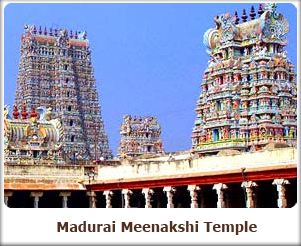 Day 08
Day 08
Tanjore – Trichy – Madurai:
By Road 200Kms/06hrs
After breakfast leave for Madurai visiting Trichy enroute.
Thiruchirapalli or Trichy is an industrial town, with important industries such as BHEL, OFT, HAPP and the Golden Rock Railway Work Shop. Situated on the banks of the Cauvery River, in ancient times it was home to the Cholas, the Pallavas and the Pandyas. Trichy is built around the 83 m high Rock Fort, which is almost 3,800 million years old.
The Rock Fort is an abruptly jutting out rock believed to be among the oldest rocks in the world. It has the ruins of a fort and a temple on the top.
Srirangam (7 km), is an island pilgrim spot in the middle of the Cauvery, with the famous Sri Ranganathaswamy Temple.
Continue drive towards Madurai. Reach Madurai and check into the hotel.
Traveling to Madurai is always a humbling experience for a discerning tourist as the holy city has some of the grandest temples in its womb that make your visit more of a pilgrimage. The city is among the oldest in India, a flourishing seat of art and culture since the Sangam period.
One of the oldest cities of India, with a cultural heritage dating back to 2,500 years, Madurai is situated on the banks of the River Vaigai and is the second largest city of Tamil Nadu.
The city was the capital of the Pandyas and later the Nayakas and is famous for its Meenakshi temple dedicated to Sundareshvara (Shiva) and his consort Meenakshi (Parvati).
Madurai is derived from the name Madhurapuri, standing for the nectar that was showered upon the city as blessings from Lord Shiva's locks.
Overnight will be at Madurai.
Day 09
Madurai:
After breakfast proceed for city tour of Madurai.
Meenakshi Amman Temple: The city of Madurai is originally built around the Meenakshi temple. Though there are many temples in the city, Meenakshi temple outdoes all with its sheer magnificence and splendor of architecture. You can marvel the temple's flawless Dravidian Architecture and be a part of devotees who throng the temple from all over India. If you wished to have a bird's eye view of the city, you could also climb the southern Gopuram of the temple see to get a great view of the city.
Koodal Azhaar Temple: Among the most ancient temples in Madurai Koodal Azhagar temple stands high. It is dedicated to Lord Vishnu. You could see him in various postures sitting, standing, reclining one over the other. Apart from that there are intricate woodcarvings, one of them depicting Lord Rama's coronation.
Thirumalai Nayak Mahal: Built in 1523 AD by the Nayak ruler Thirumalai Nayak, the palace is an excellent example of Indo-Saracenic architecture. Once four times larger than what is left of it today, the palace is only left with the main entrance gate, the dancing hall and the main hall. You can enjoy the main attraction of the palace which is light and sound show based on the life of "Tirumalai Nayak" and "Silapathikaram".
Vanditur Mariamman Teppakulam: Built by Thirumalai Nayak in 1646, this huge tank covers an area equal to the six of Meenakshi temple. Some sources say that this tank was once connected to Vaigai River, however today it lies empty except during the Teppam Festival.
The Gandhi Museum: All those with interest in Gandhi's philosophy may well plan a visit to this museum, which has some of the little known facts about Mahatma Gandhi. The museum has a real Gandhi Memorabilia in the form of a blood stained dhoti, which he was wearing at the time of his assassination. The museum is the repository of various testimonies relating to the freedom movement of India.
Thirupparankundram: As one of the abodes of Lord Sundareshvara, it is a rock cut temple carved out of a mountain, just 8-km from the city.
Azhagar Koil: Dedicated to Lord Vishnu, the temple is located 18-km northeast of Madurai on a picturesque hilltop. You can attend Chithirai festival when the gold image of Azhagar travels for the Celestial marriage.
Pazhamudhirsolai: It is one of the six abodes of Lord Subramanya on the same hills of Azhagar Koilths.
Overnight will be at Madurai.
Day 10
Madurai – Excursion to Rameshwaram:
Breakfast will be at the hotel.
Proceed for an excursion to Rameshwaram.
Known as the Varanasi of South India, Rameshwaram is a major pilgrimage centre for Hindus, for both Shaivaites and Vaishnavites. It lies on an island in the Gulf of Mannar, at the tip of the Indian peninsula. It is a major historical and cultural centre and is considered as the mythological place from where Lord Rama built the bridge to Lanka.
At the centre of the town, lies the Ramanathaswamy temple, one of the most important temples in the south of India. Besides the main temple, other attractions include Agnitheertham and Dhanushkodi, so named after Lord Rama’s bow, which has a nice bathing pool and one of the nicest beaches in this area. There are also pristine beaches in Olaikuda and Pamban. Besides being a pilgrimage centre, Rameswaram Island also has several places, which are ideal picnic spots. One can also explore the fishing hamlets around Rameshwaram
Overnight will be at Madurai.
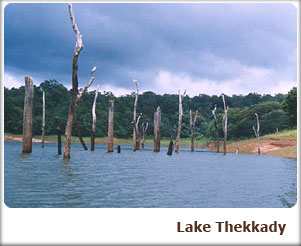 Day 11
Day 11
Madurai – Thekkady:
By Road 160kms/04 hrs
Breakfast will be at hotel.
Proceed to Thekkady. Reach and check into the hotel.
Discover the veritable essence of Kerala’s well kept wilderness secrets at Thekkady. This green oasis is one of the last safe havens for the elusive Indian tiger- an endangered species now on the verge of extinction. This exotic land reminds of a colorful impressionistic painting stirred to life as if by a miracle. Thekkady fantabulous landscape is diffused with exotic spice plantations, green carpets of endless tea gardens and lush tropical forests. Garbed in vibrant hues and bountiful gifts of nature, Thekkady offers a perfect romantic escapade into the soothing laps of Mother Nature.
Thekkady is home to the Periyar Tiger Reserve, one of the best among the 27 tiger reserves in India. The very name of this romantic land conjures up exotic visions of wildlife, plantations, spice scented air, crystal clear lakes and mist covered endless rolling hills. Thekkady epitomizes Kerala’s sublime beauty in all its pristine glory. Come and be overwhelmed with a vacation of your lifetime in this dazzling land of impeccable beauty. Each day in this exotic land is a celebration of life and nature; epitomizing “La Dolce Vita”.
Relax and then enjoy the sightseeing.
Kumily: The quaint town of Kumily lies at a distance of about 4 km from Thekkady nestled in the realms of the majestic Cardamom Hills. The plantation town is surrounded by tea and spice plantations making it an ideal place to study how Indian spices are grown and how they are used in local cuisines. The scenic beauty of the area is further accentuated by its crisp blue skies, lush greenery and mist drenched mountains. This hub of spice trade is located at the vicinity of the Periyar wildlife sanctuary and makes a perfect base to explore the region.
Plantation tours: Do make it a point to visit some of the numerous tea and spice plantations in the area. This is the best way to understand how these exotic spices are grown and to learn how they are used in the local cuisines. Tea factories could also be visited to see how the tea leaves are processed and to meet some of the workers involved in it. There are vanilla, cardamom and spice plantations in the region which could be visited with permission.
Enjoy elephant ride.
Overnight will be at Thekkady.
Day 12
Thekkady:
Breakfast will be at the hotel.
Today you will visit the rare species of plants and animals by taking a short walk and enjoying the safari.
Periyar Tiger trail: A trekking expedition could be organized inside the Periyar Wildlife Sanctuary with the permission of the authorities. There is a set limit to the maximum number of people per expedition and it’s also subjected to meeting certain medical standards. This is because of the strenuous nature of this expedition through the dense remote jungles. The guides for this trail were poachers earlier and are now actively involved in protecting the unique ecosystem and the wildlife of the region.
Trekking and Mountaineering: Trekking is the best way to explore the scenic beauty of the mountainous terrain. Trekking expeditions could be undertaken at the Periyar Wildlife Sanctuary provided you take prior permission from the authorities. You have to take a guide approved by the authorities before you can go trekking inside the jungles.
Bamboo Rafting: This exciting adventure sport is available at the Periyar Wildlife Sanctuary. You can get in touch with the forest authorities for permission to do bamboo rafting in the Periyar Lake. This is one of the best ways to experience the area and to catch glimpses of wildlife at close quarters.
Overnight will be at Thekkady
Day 13
Thekkady – Kumarakom:
By Road 120Kms/04hrs
After breakfast proceed to Kumarakom.
Kumarakom, a prime backwater-tour destination, is world– renowned for its bewitching backwaters and picturesque tropical landscapes. This naturally blessed land has loads to offer even for the most discerning traveler. The unique geographical terrain of the region dispersed with vast paddy fields, palm groves, mangrove forests, lagoons, canals and backwaters make Kumarakom quite distinct from any other place in Kerala. Life in this small hamlet revolves around the Vembanad Lake – the life-line of Kumarakom; people here lead a unique water-based lifestyle quite different from the rest of the state.
Check into a traditional houseboat of Kerala Style and go on a leisurely backwater cruise along the lake on a thatched houseboat. The houseboat with all modern comforts lets you discover the countryside at your own pace. You will have lunch, dinner and breakfast in the Houseboat. A ride on the houseboat is a fabulous way to explore the fascinating beauty of the backwaters.
Cruise through the backwaters towards Alleppey. Lunch will be served on the boat. The menu is simple and traditional. The cook (chef) of the boat prepares the lunch from fresh materials and even you can have a peek at the recipe.
Tea and snacks would be served in the evening. The boat will be anchored in the backwaters along a paddy field and you can go for a stroll into the village or relax at the deck of the boat.
Dinner will be on the boat. Overnight will be at Houseboat.
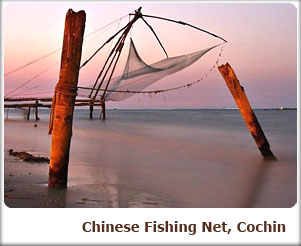 Day 14
Day 14
Alleppey - Cochin
By Road 50Kms/02hrs
Breakfast will be on board the boat.
Cruise through the backwaters watching the children going to school and the village markets opening.
Disembark the boat at the finishing point where your driver will be waiting for you to drive to COCHIN.
The striking port city of Kochi or Cochin is a tourist's paradise. Lush mangroves, coconut tress reflected in the translucent waters of backwaters, ancient churches, cathedrals and fort - tourists on sightseeing tours of Cochin would find all these and more. Flanked by the Western Ghats on the east and the majestic looking Arabian Sea in the west, Kochi occupies a very strategic location and has been a significant trading zone and attractive tourist destination since time immemorial. The tradition and reputation of this enchantingly quaint port city has maintained till date. Here's a list of popular sightseeing places to be seen on a tour of India.
Relax & then proceed for the sightseeing.
Fort Kochi: Even a casual stroll through Fort Kochi located in the port city of Kochi in Kerala is enough to make you feel transported to another world and time. The architectural style of the buildings and the town layout easily make Fort Cochin distinct from other cities and towns of Kerala. Since Fort Cochin was under the possession of the Portuguese, the Dutch and the British at different points of time, the region still bear the influence of European architecture.
Bolghatty Palace: The splendid Bolghatty Palace is located on the Bolghatty Islands, in the Cochin city of Kerala. The appeal of the palace lies in the fact that it is among the oldest existing palaces built by the Dutch in India, during the pre-British times.
Chinese Fishing Nets: The Chinese fishing nets at Fort Kochi, located in the Kochi city of Kerala, make up a very popular tourist attraction. They are fixed land installations, which are used for a very unique and unusual method of fishing.
Mattancherry Palace: Even though it is austere in its appearance, the Mattancherry Palace of Cochin has a quaint charm of its own. The credit for building this landmark monument partly goes to the Dutch, who captured Cochin city of Kerala during the pre-British period.
Marine Drive: Marine Drive is a beautiful promenade in Kochi (Cochin), Kerala state of India. The Marine Drive is built facing the backwaters of Kochi. It is a popular hangout for the local populace as well as the tourists.
Jewish Synagogue: The Jewish Synagogue in the port city of Kochi is the oldest synagogue in all the Commonwealth of Nations. Thus, it comprises the topmost slot in the itinerary of the tourists visiting the city.
Pareekshith Thampuran Museum: Pareekshith Thampuran Museum is a very good archeological museum located near the Shiva temple, on the Durbar Hall Road at Ernakulam. This museum boasts of an impressive collection of 19th century paintings, ancient monuments and coins, scriptures made in stone and Plaster of Paris, murals as well as memorabilia belonging to the Cochin royal family.
St Francis Church: St Francis Xavier's Church at Fort Kochi was built in the year 1503, by the Portuguese traders. They came here with Admiral Pedro Alvarez de Cabral, via the same route taken by the legendary Portuguese explorer Vasco da Gama, who landed at Calicut in 1498.
Willingdon Island: The Willington Island contains the modern port serving Cochin city of Kerala. The island is an artificial man-made island created from the sand dug out while deepening Kochi port.
Museum of Kerala History: Do not take the Museum of Kerala History in the Cochin city of Kerala as any ordinary museum. The significance of this 'live' museum lies in the fact that it recounts the history of the land through magnificent and informative light and sound shows.
Overnight will be at Cochin.
Breakfast will be at the hotel.
Enjoy last minute shopping.
As per the flight timings you will be transferred to the airport to take flight back home with sweet memories of TOUR
...........................................................................TOUR ENDS...........................................................................INCLUSIONS:
- ACCOMODATION AT SUGGESTED HOTELS,
- DAILY BUFFET BREAKFASTS,
- AIR CONDITIONED VEHICLE WITH DRIVER FOR THE TOUR,
- SIGHTSEEING TOURS AS MENTIONED IN THE ITINERARY,
- MEET AND ASSIST SERVICES ON ARRIVAL AND DEPARTURE,
- ENGLISH SPEAKING GUIDE AT APPLICABLE PLACES,
- BHARATNATYAM DANCE PRESENTATION IN CHENNAI,
- EXCURSION TO TIRUPATI,
- EXCURSION TO RAMESHWARAM,
- DAY PACKAGE WITH BAMBOO RAFTING IN PERIYAR,
- SPICE PLANTATION TOUR IN PERIYAR,
- ELEPHANT RIDE IN PERIYAR,
- OVERNIGHT STAY IN HOUSEBOAT,
- ALL MEALS IN HOUSEBOAT,
- KATHAKALI DANCE PRESENTATION IN COCHIN,
- ALL APPLICABLE TAXES AND SERVICE CHARGES, AND
- ALL PARKING WITH DRIVER ALLWANCES AND ROAD TAXES.
EXCLUSIONS:
- LUNCHES & DINNERS,
- MONUMENT ENTRANCES,
- CAMERA CHARGES AT THE MONUMENTS,
- PORTER CHARGES,
- TIPS &
- PERSONAL EXPENSES.

